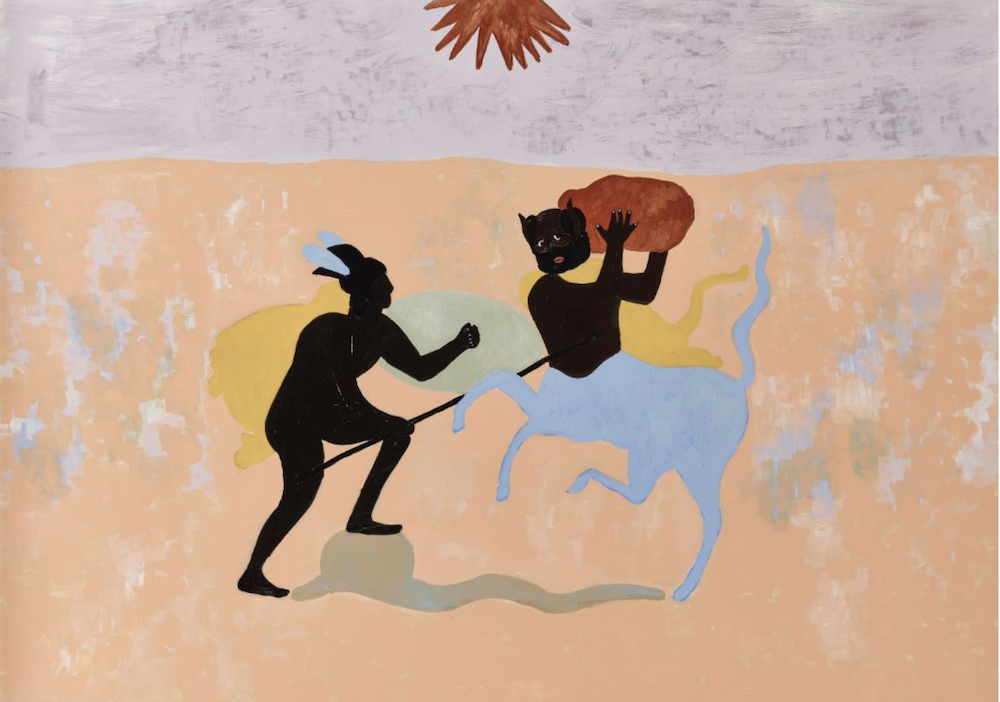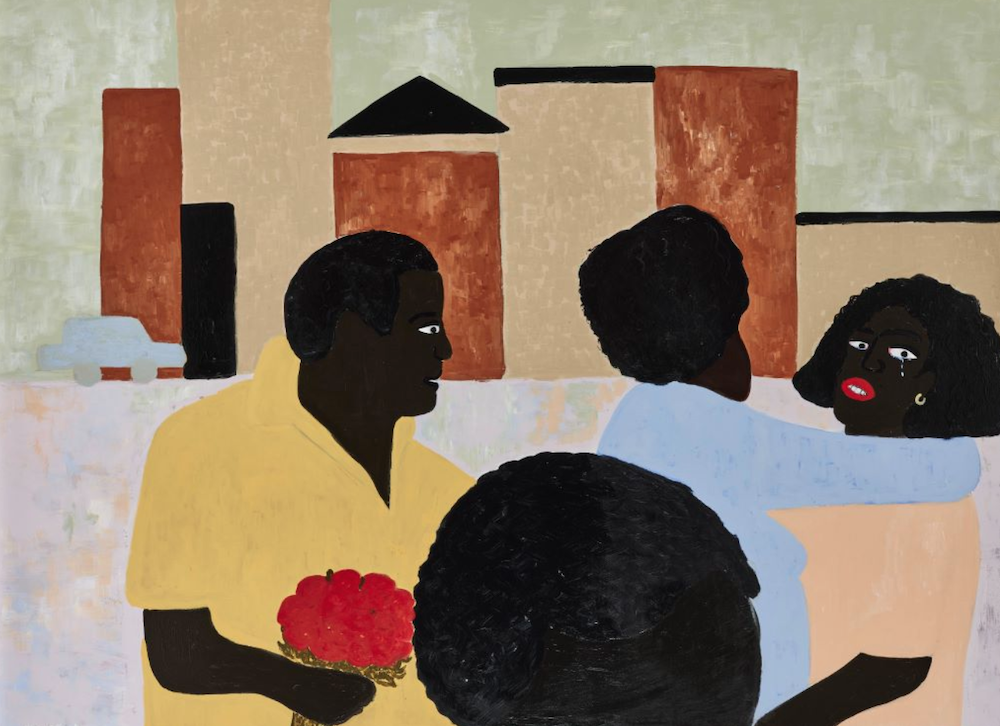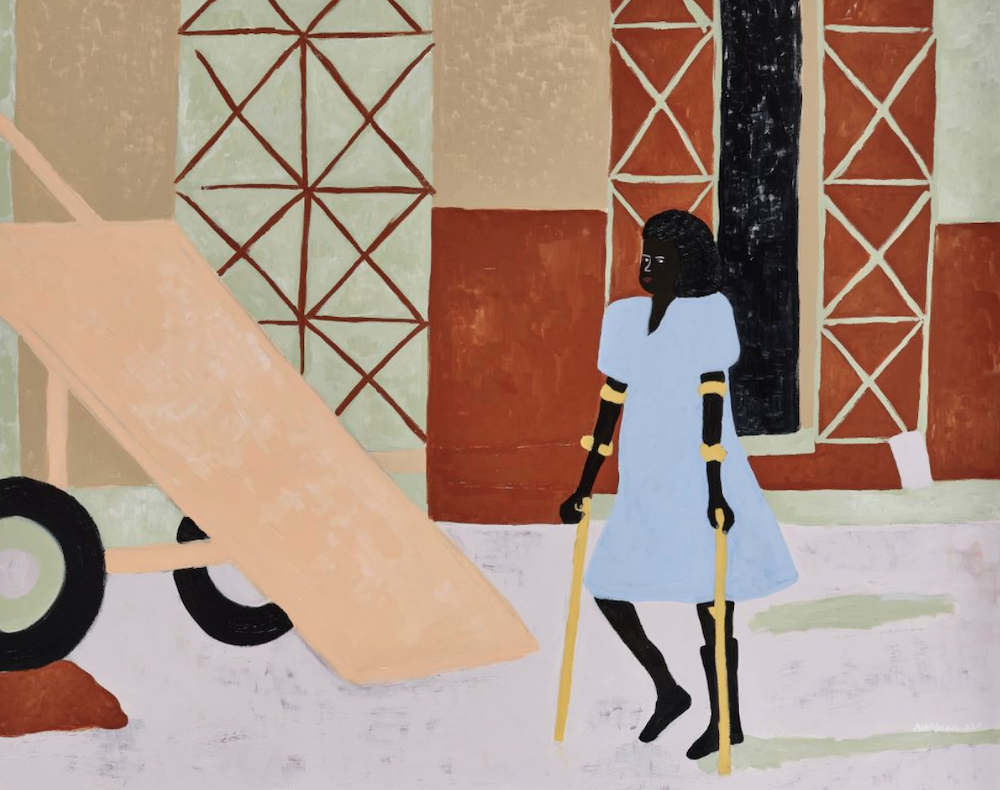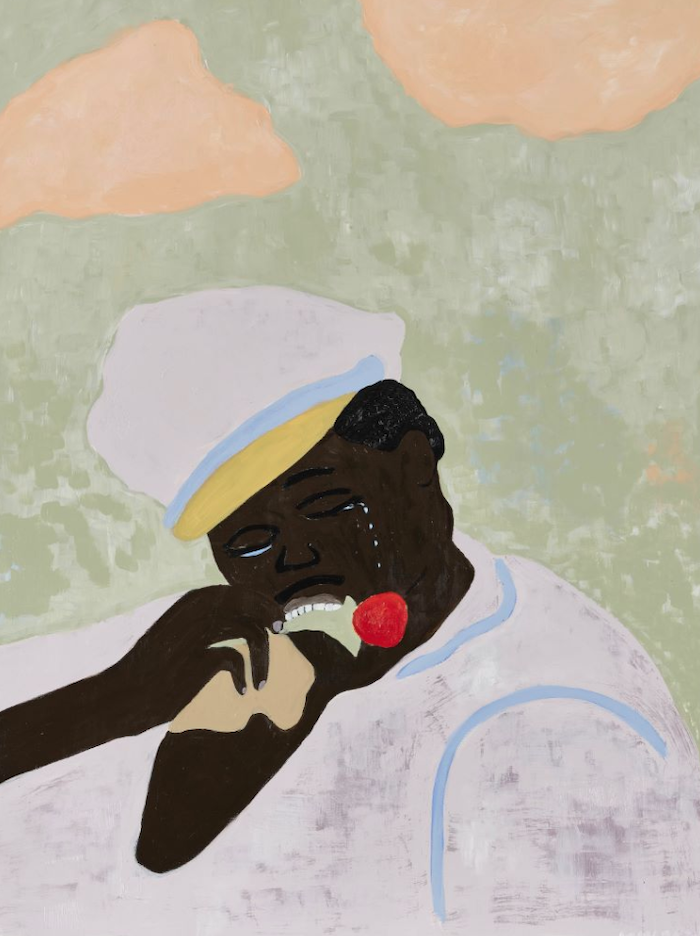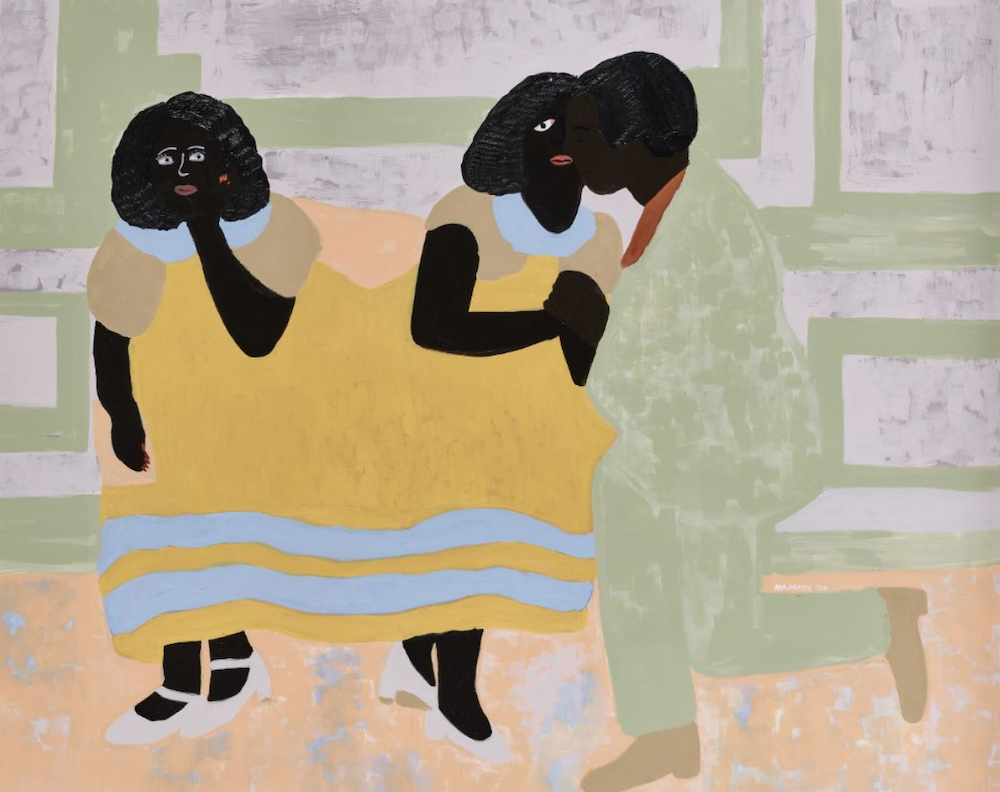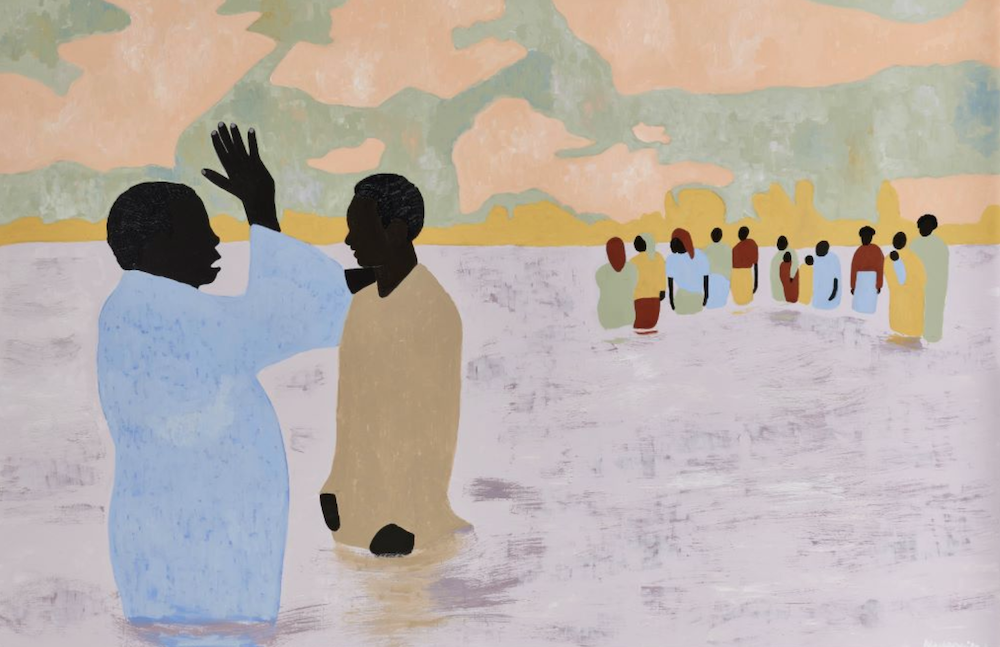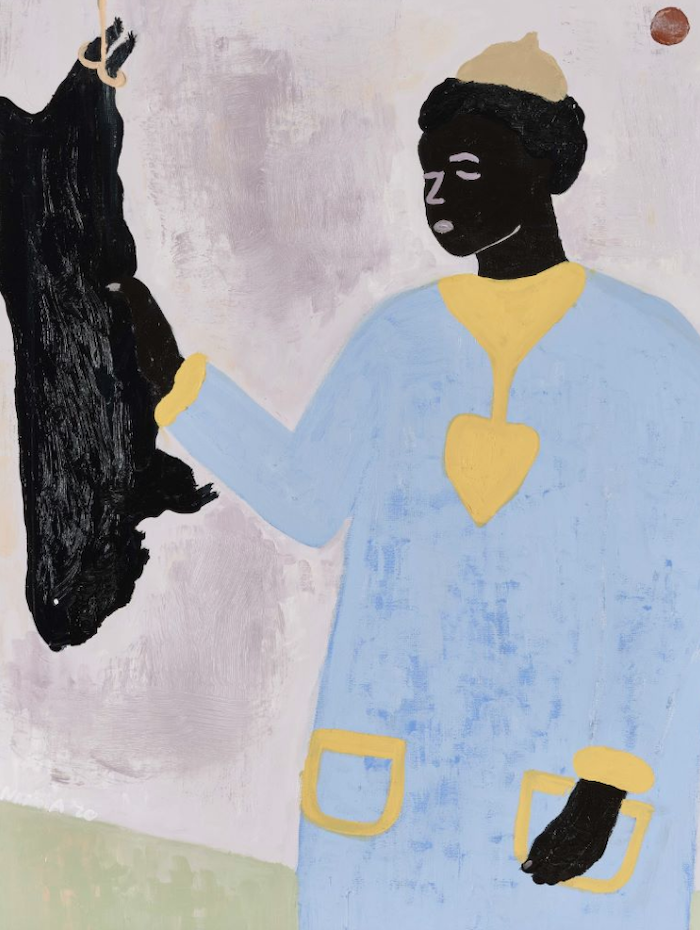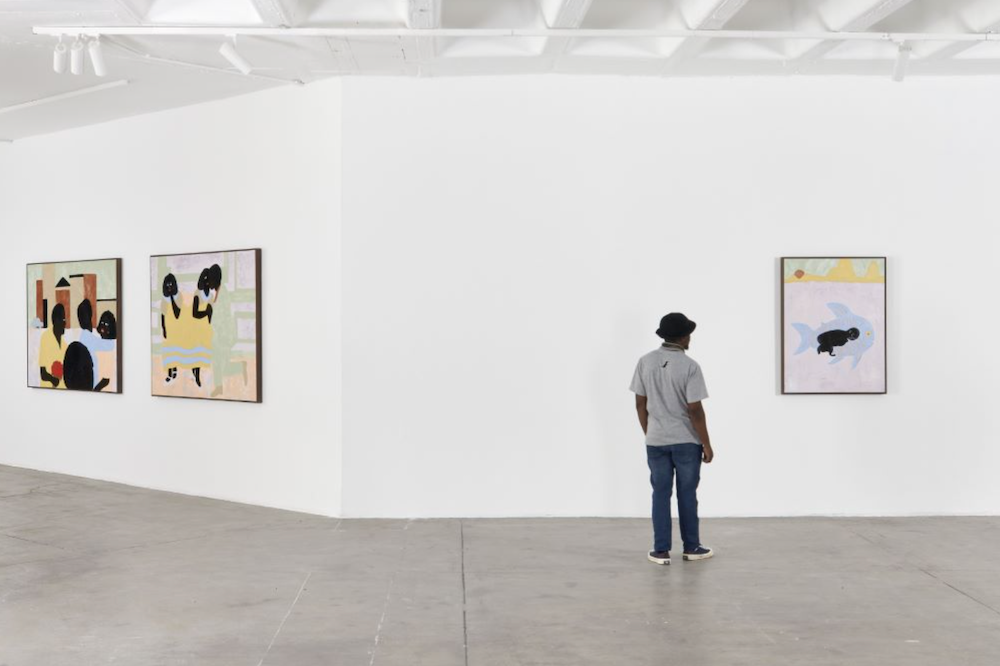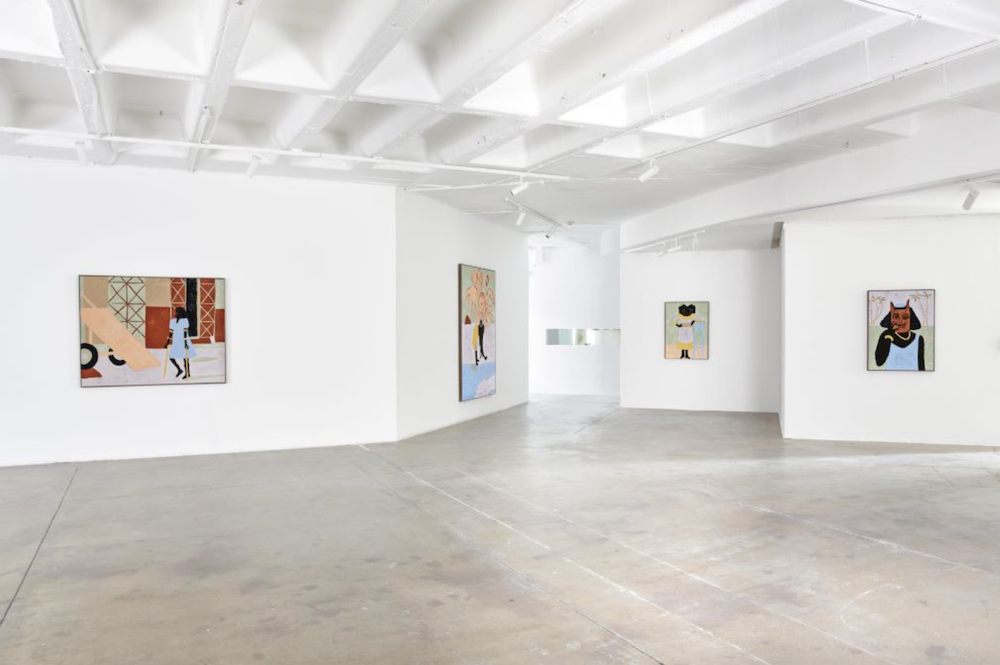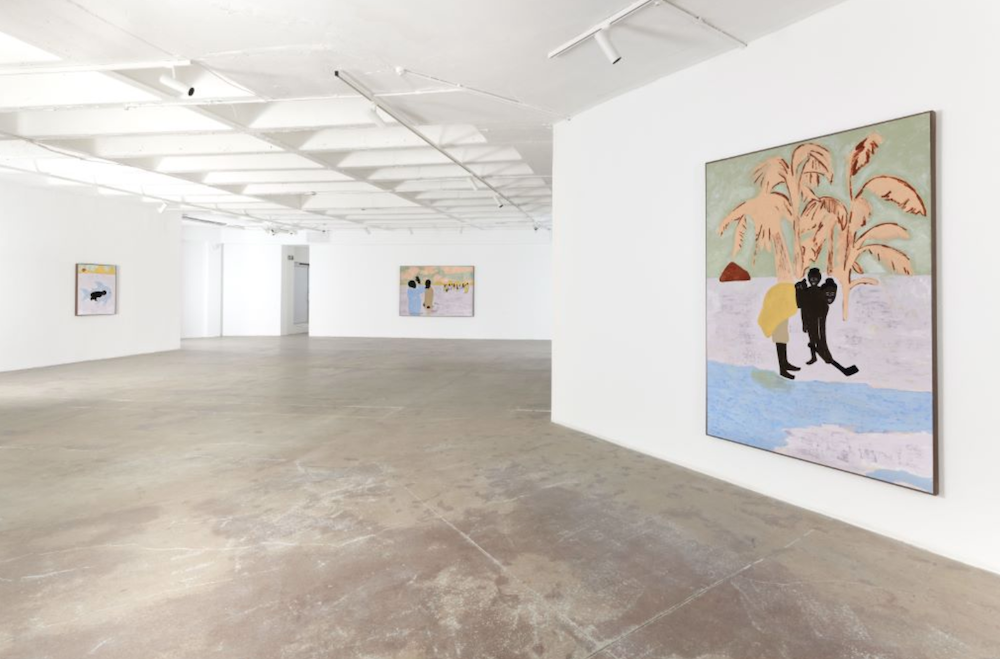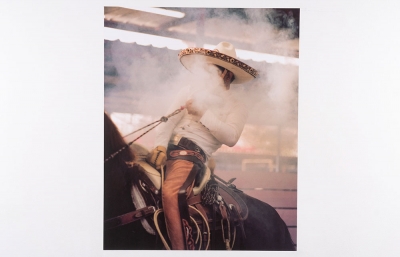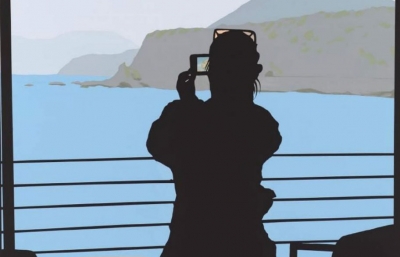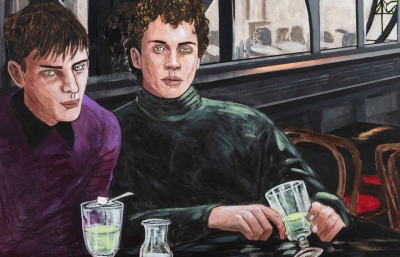Goodman Gallery in Johannesburg, South Africa is pleased to present To live long is to see much, a new series of paintings by Cassi Namoda. The exhi-bition marks Namoda’s debut with Goodman Gallery as well as her first time exhibiting on the continent beside her native country, Mozambique.
Made during lockdown this past summer at Namoda’s home studio in East Hampton, Long Island, this body of work offers a prescient reflection on life experience, thresholds, and the passage of time in Africa. The exhibition presents a series of tableaus and various forms that weave narratives of magic realism into the verdant Mozambican landscape.
Namoda’s practice is rooted in cultural observation gained from a childhood spent growing up between Mozambique, Haiti and the United States. The result is work which incorpo-rates Namoda’s various cultural and artistic references, often drawing on images from archival photographs, memories and imagination.
For this new body of work, Namoda has chosen to use a ti-ght, consistent palette of oil and acrylic paints. Varying in size, Namoda’s paintings feature characters set against vast land-scapes composed of varying colours and broad, sweeping brushstrokes. The characters depicted take part in a range of activities from the simple act of sleeping to religious rituals and mythic scenes. In bringing together this mix of personal experience with broader fictional narratives, Namoda’s can-vasses explore various themes related to the origin of life, the nature of time, history, symbolism, and dreams.
“It’s a very interesting and complex time,” says Namoda, referring to the context in which she has made this work while “thinking about the liberation of Southern African people and the state of diaspora currently in the United States.” This reflection is echoed in the exhibition’s title, which is taken from an accompanying short poetic text written by New York-based writer and Namoda’s research collaborator, Wesley Hardin. In reference to the phrase, ‘To live long is to see much’, Hardin writes:
“There it is—the question that masquerades as an adage: And what of seeing? Or the question beneath the veil of the first question: And, if long-lived, what of learning?

